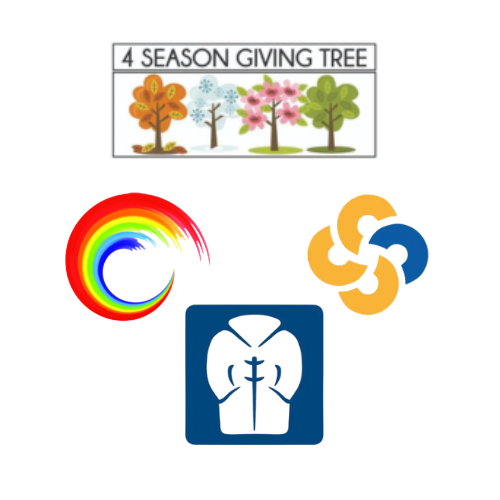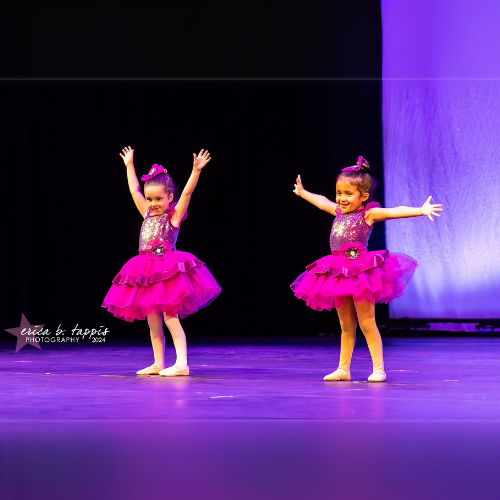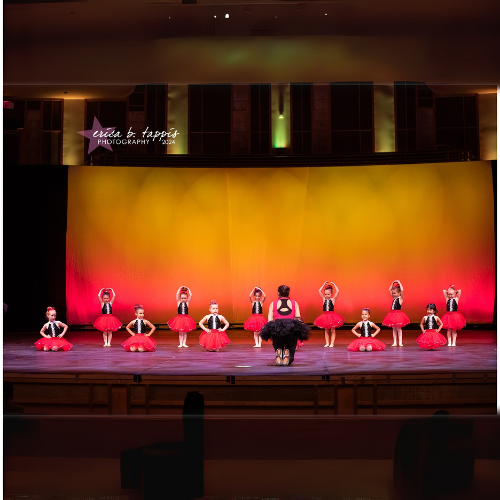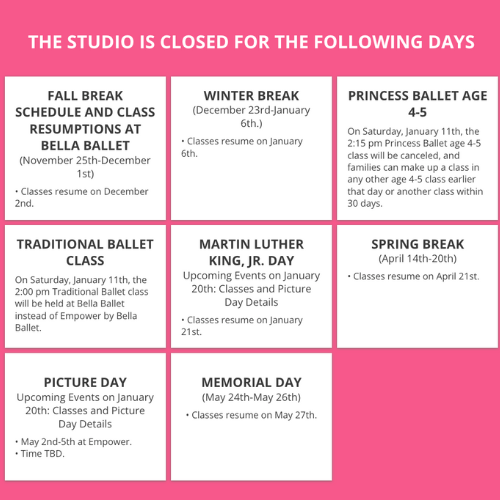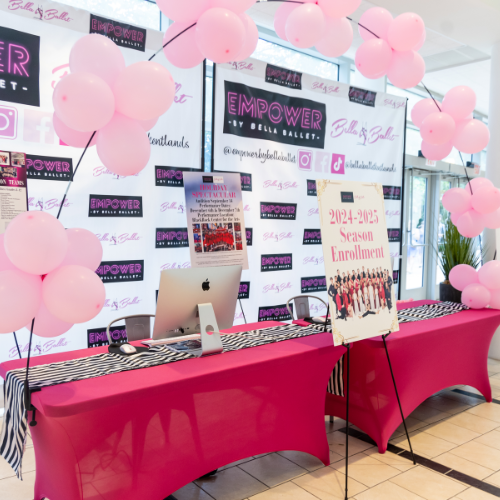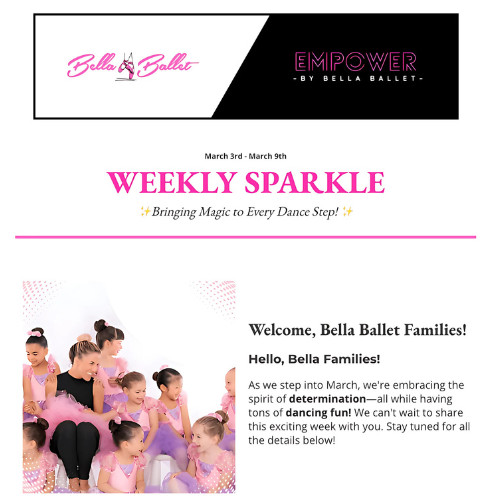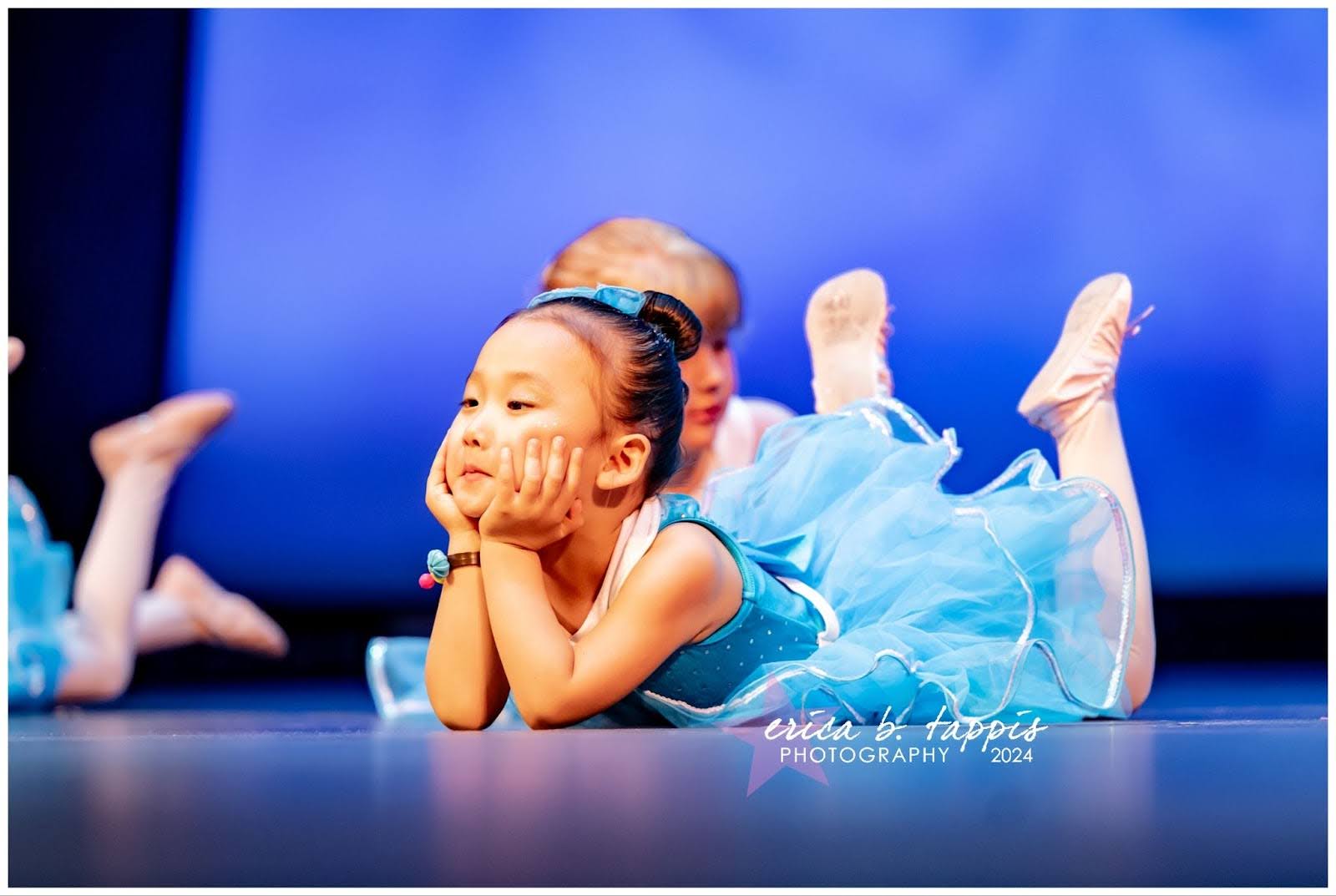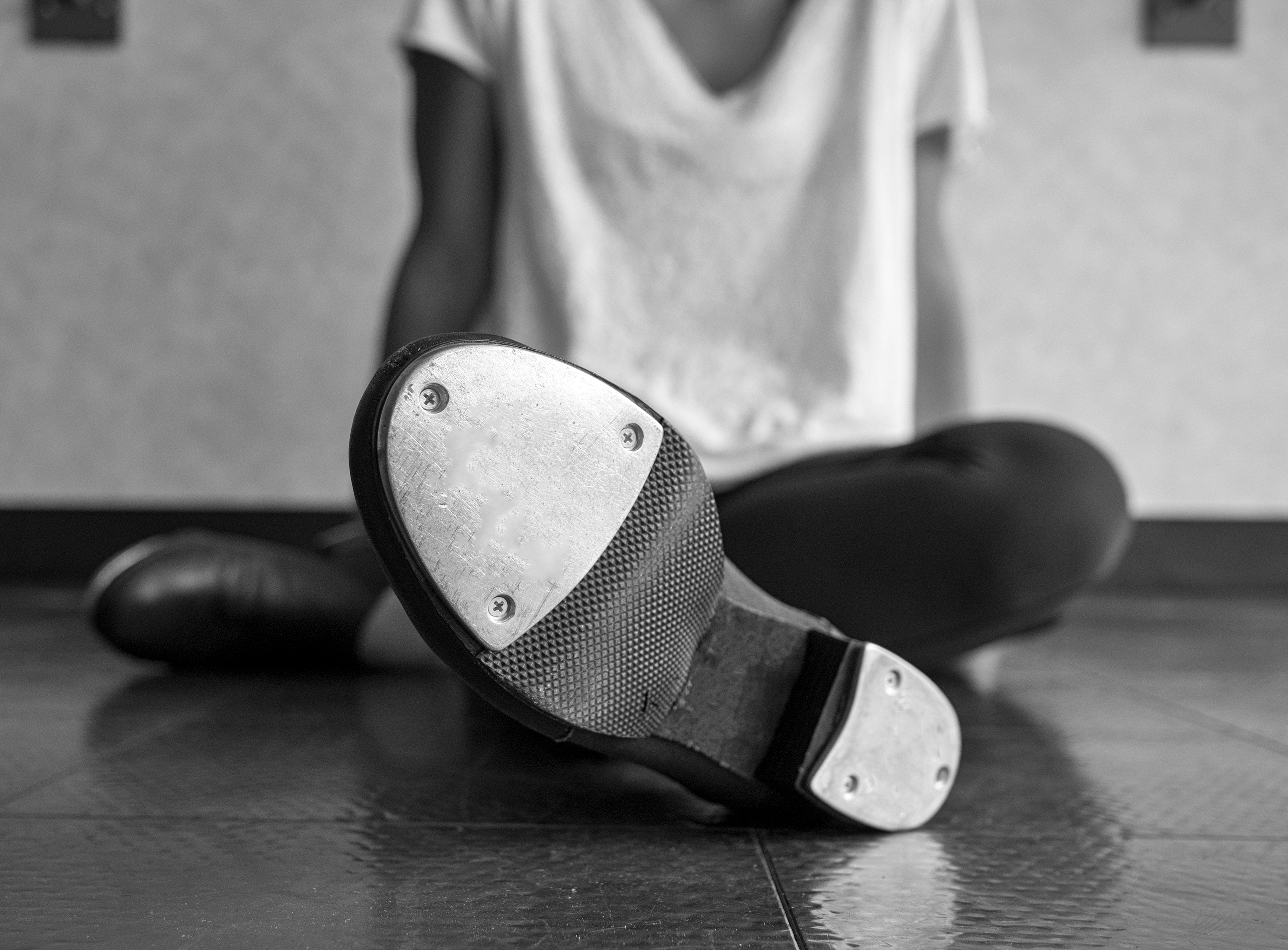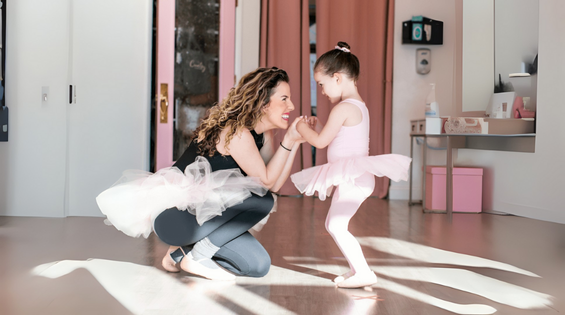check out our blog
View Our Blog Below
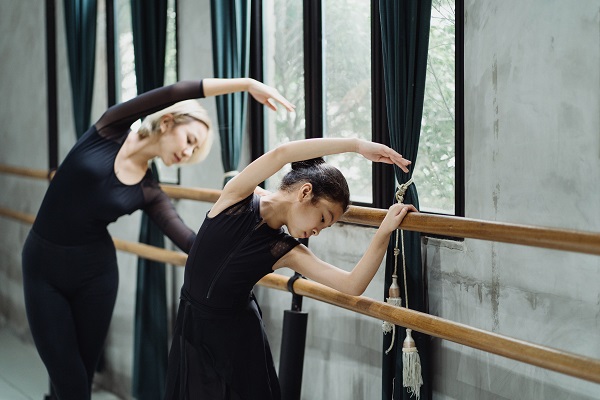
Achieve Your Dance Goals with These 22 Game-Changing Tips
Dance is a beautiful and expressive art form that requires precision and technique.
Good technique is essential for dancers of all ages and experience levels, as it allows them to perform movements safely, efficiently, and with grace.
Whether you're a beginner or an experienced dancer, there's always room to improve your technique.
In this blog post, we'll provide you with some tips and tricks for improving your dance technique. We'll cover important aspects such as proper posture, flexibility exercises, and breathing techniques, as well as some practice tips to help you master your technique.
By following these tips, you'll be well on your way to becoming a better dancer and improving your overall dance experience.
So let's get started and dive into some of the most important tips and tricks for improving your dance technique!
Proper Posture
Good posture is essential for dancers. It not only helps prevent injury but also enhances the aesthetic quality of their movements.
Proper alignment of the body helps dancers execute movements with precision and ease, while also conveying a sense of confidence and control.
5 Tips for maintaining proper posture
1 Align the ears, shoulders, and hips: Stand tall with your feet hip-width apart and align your ears, shoulders, and hips in a straight line. This creates a strong and stable foundation for your movements.
2 Engage your core: Draw your belly button towards your spine and engage your core muscles. This helps support your spine and keeps you stable and balanced.
3 Relax your shoulders: Keep your shoulders relaxed and away from your ears. Tension in the shoulders can interfere with your arm movements and make your upper body appear stiff.
4 Maintain a neutral spine: Avoid arching your back or hunching your shoulders. Instead, aim for a neutral spine with a natural curve in your lower back.
5 Keep your chin level: Avoid tucking in your chin or looking up at the ceiling. Keep your chin level and your gaze forward.
3 Exercises and stretches to improve your posture
1 Wall angels: Stand with your back against a wall and raise your arms to shoulder height, palms facing forward. Slowly slide your arms up the wall as high as you can while keeping your shoulders down.
Hold for a few seconds and then slowly lower your arms back down.
2 Planks: Get into a plank position, with your hands shoulder-width apart and your feet hip-width apart. Hold for 30 seconds to one minute, keeping your core engaged and back straight.
3 Cat-cow stretch: Get on your hands and knees, with your wrists directly under your shoulders and your knees directly under your hips.
Inhale and arch your back, bringing your gaze up towards the ceiling (cow pose). Exhale and round your spine, tucking your chin to your chest (cat pose). Repeat for several breaths.
Remember, proper posture is not just important in dance, but in everyday life as well. By practicing good posture, you'll not only improve your dance technique, but also promote overall health and well-being.
Also read: 3 Ways To Know if Your Child is Ready for Dance
Flexibility Exercises
Flexibility is crucial for dancers because it allows for a greater range of motion and the ability to perform more challenging movements.
Without good flexibility, dancers risk injury and may struggle to execute certain steps with precision and ease.
3 stretches and exercises to help increase flexibility
1 Splits: Splits are a great way to increase flexibility in the legs and hips.
Begin in a lunge position with one leg forward and the other leg extended behind you. Slowly slide your back leg back as far as you can, keeping your hips squared forward.
Hold for 30 seconds to one minute, then switch legs and repeat.
2 Lunges: Lunges are another effective exercise for improving flexibility in the legs and hips. Begin in a lunge position with one leg forward and the other leg extended behind you.
Slowly lower your back knee towards the ground, keeping your front knee directly above your ankle. Hold for 30 seconds to one minute, then switch legs and repeat.
3 Leg swings: Leg swings are a dynamic stretching exercise that can help improve flexibility and range of motion in the legs.
Stand with one hand on a wall or chair for balance. Swing one leg forward and backward, keeping your leg straight and your toes pointed.
Gradually increase the height of your swing and the speed of your movement. Repeat for 10 to 15 swings and then switch legs.
4 tips for incorporating these exercises into your daily routine
1 Stretch after warming up: Before beginning any flexibility exercises, make sure to warm up your muscles with some light cardio and dynamic stretches.
2 Start slowly and gradually increase intensity: If you're new to stretching, start with gentle stretches and gradually increase the intensity and duration of your stretches over time.
3 Be consistent: Consistency is key when it comes to improving flexibility. Try to stretch daily, even if it's just for a few minutes.
4 Listen to your body: It's important to listen to your body and avoid pushing yourself too hard. If you feel pain or discomfort, back off and modify the exercise.
By incorporating these flexibility exercises into your daily routine, you'll not only improve your dance technique but also promote overall health and well-being.
Now read: 5 Things to Consider When Choosing a Dance Studio for Your Kid
Breathing Techniques
Proper breathing is an essential aspect of dance technique, as it can help with stamina, control, and performance quality.
Here are some tips for proper breathing during different types of dance:
Ballet
In ballet, breathing is often coordinated with movements to help create a sense of flow and ease. During pliés and tendus, inhale through the nose and exhale through the mouth.
During jumps and turns, exhale sharply through the mouth to help generate power and control.
Contemporary
In contemporary dance, breathing is often used to help express emotion and enhance the movement quality.
Try to breathe deeply and fully, using the diaphragm to expand the lungs and rib cage.
Experiment with different patterns of inhaling and exhaling to create different dynamics and moods.
3 exercises to help improve breathing technique
1 Diaphragmatic breathing: Lie on your back with one hand on your chest and one hand on your stomach.
Inhale deeply through the nose, allowing your stomach to rise and your chest to expand. Exhale slowly through the mouth, allowing your stomach to fall and your chest to deflate.
Repeat for several breaths, focusing on the sensation of your breath filling your lungs.
2 Breath support: Stand with your feet hip-width apart and your hands on your waist. Inhale deeply through the nose, then exhale forcefully through the mouth, using your abdominal muscles to push the air out.
Repeat for several breaths, gradually increasing the intensity of your exhalations.
3 Breath control: Sit in a comfortable position and set a timer for one minute. Inhale deeply through the nose, then exhale slowly through pursed lips, counting to four.
Repeat for the entire minute, focusing on maintaining a steady pace and controlling the length and intensity of your exhalations.
By incorporating these breathing techniques and exercises into your dance practice, you can improve your stamina, control, and overall performance quality. Remember to focus on breathing deeply and fully, coordinating your breath with your movements, and experimenting with different patterns and dynamics to enhance your dancing.
4 Practice Tips To Become a Better Dancer
Improving your dance technique requires consistent and focused practice both inside and outside of the studio. Here are some tips for getting the most out of your practice sessions:
1 Break it down: When learning a new movement or combination, break it down into smaller parts and practice each one separately.
This will help you focus on the details of the movement and ensure that you are executing it correctly.
Once you have mastered each part, gradually build them up together until you can perform the entire movement or combination smoothly.
2 Practice slowly: When working on new or challenging movements, start by practicing slowly and gradually increase your speed as you become more comfortable with the movement.
This will help you develop muscle memory and control, which will ultimately lead to cleaner and more precise execution of the movement.
3 Use mirrors and video recordings: Utilize mirrors and video recordings to check your alignment and technique.
This will help you identify areas that need improvement and make adjustments accordingly. Video recordings are especially helpful for analyzing your technique and progress over time.
4 Practice outside of class: In addition to attending regular dance classes, practicing outside of class is crucial for improving technique.
Try to set aside time each day to practice, even if it's just for a few minutes. This will help reinforce the movements and techniques learned in class and accelerate your progress.
By incorporating these practice tips into your dance routine, you can improve your technique and overall performance quality.
Remember to practice consistently, break down movements into smaller parts, practice slowly, use mirrors and video recordings to check your alignment, and find ways to practice outside of class. With patience and dedication, you can take your dance technique to the next level.
In Conclusion
Improving dance technique is a continuous process that requires patience, dedication, and consistent practice.
Remember to be patient with yourself and celebrate your progress along the way. By incorporating these tips into your dance practice, you can improve your technique and overall performance quality.
We encourage you to share your own tips and tricks for improving dance technique in the comments below. By learning from each other and sharing our experiences, we can continue to grow and improve as dancers.
Now read: 5 Benefits of Summer Dance Camps (and Key Questions)
Contact Us
By submitting this form, you agree to receive text messages from Bella Ballet Kentlands & Empower by Bella Ballet about upcoming classes, special events, and other news. Message and data rates may apply.
ADDRESS & HOURS
347 Kentlands Blvd, Gaithersburg MD 20878
Monday: 10 AM - 8 PM
Tuesday: 9 AM - 8 PM
Wednesday: 10:30 AM - 8 PM
Thursday: 10 AM - 8 PM
Friday: 9 AM - 12 PM
Saturday: 8:30 AM - 2:00 PM
Sunday: 8:30 AM - 3:00 PM
Come see what all the hype is about! Call us today at (301) 970-3488 to book a free trial class, or email us at [email protected]. We’re here to serve and are happy to answer any questions you may have.
Opening Hours
Monday: 10 AM - 8 PM
Tuesday: 9 AM - 8 PM
Wednesday: 10:30 AM - 8 PM
Thursday: 10 AM - 8 PM
Friday: 9 AM - 12 PM
Saturday: 8:30 AM - 2:00 PM
Sunday: 8:30 AM - 3:00 PM

